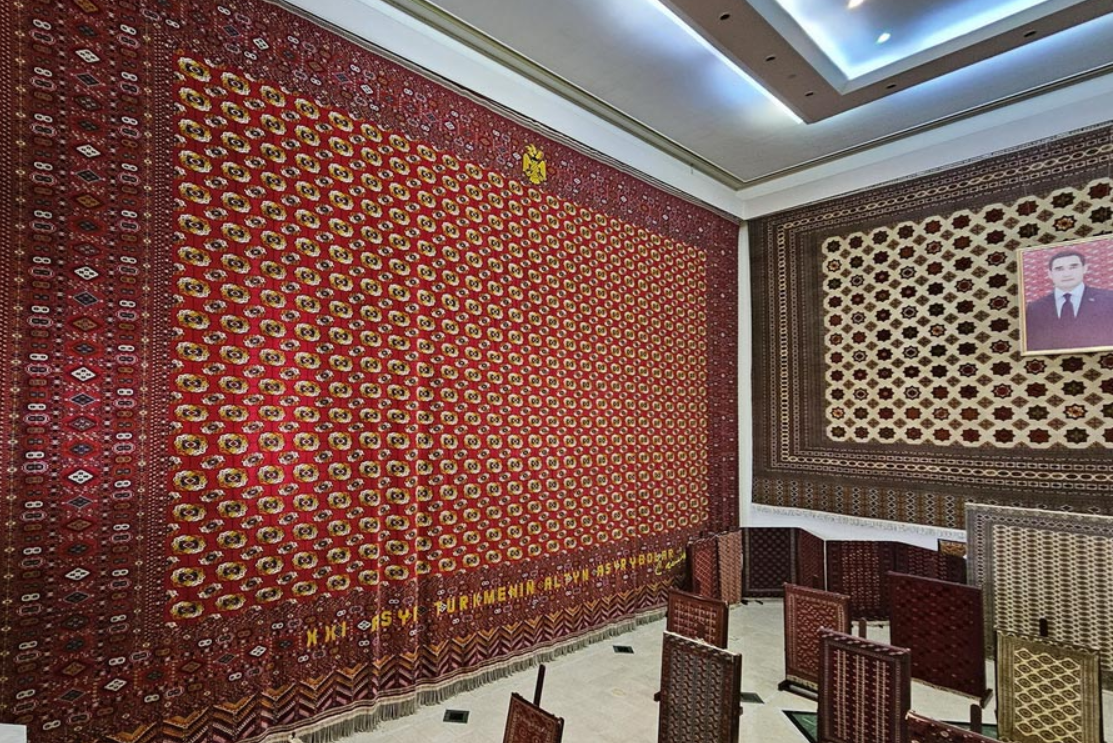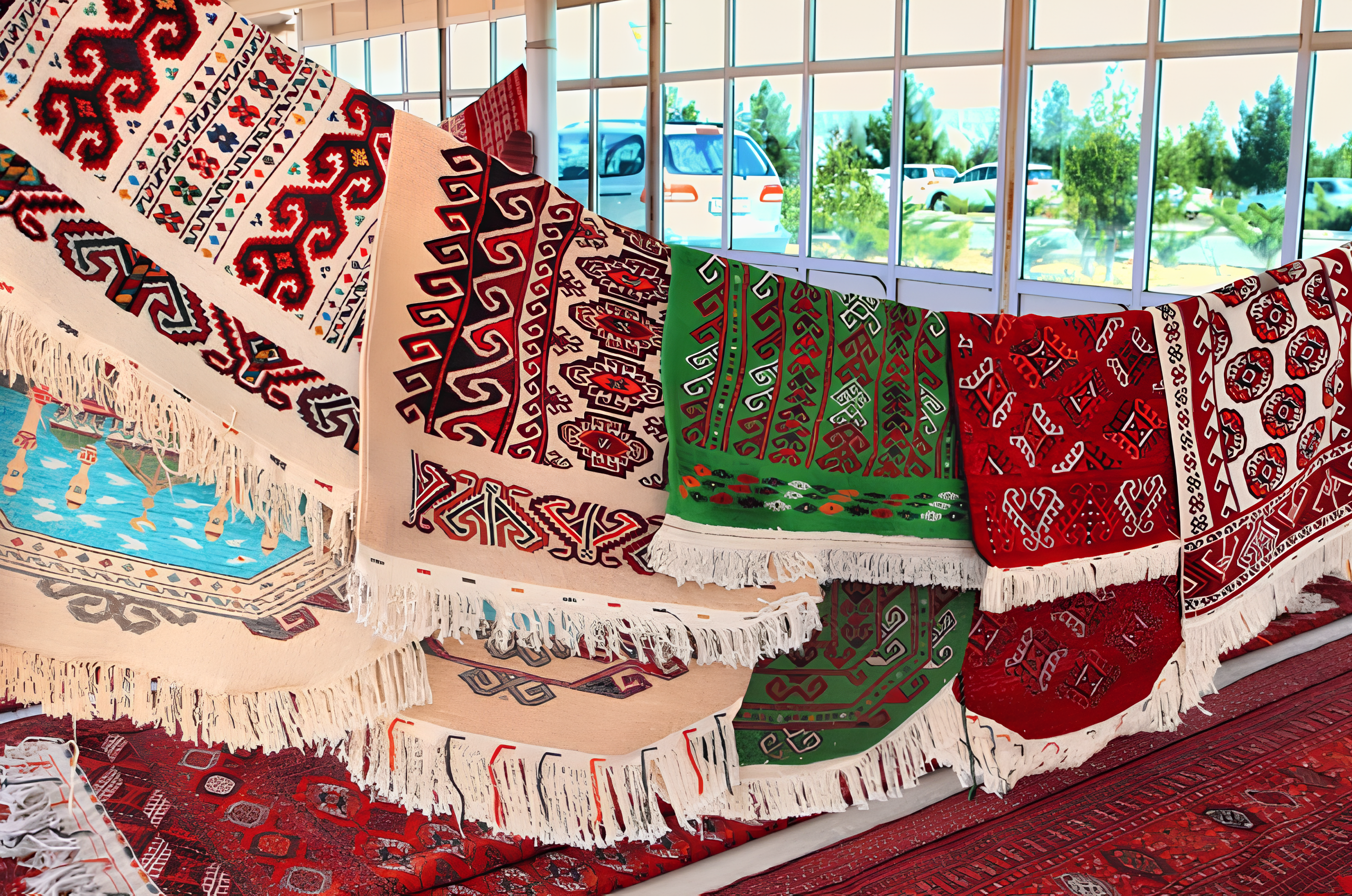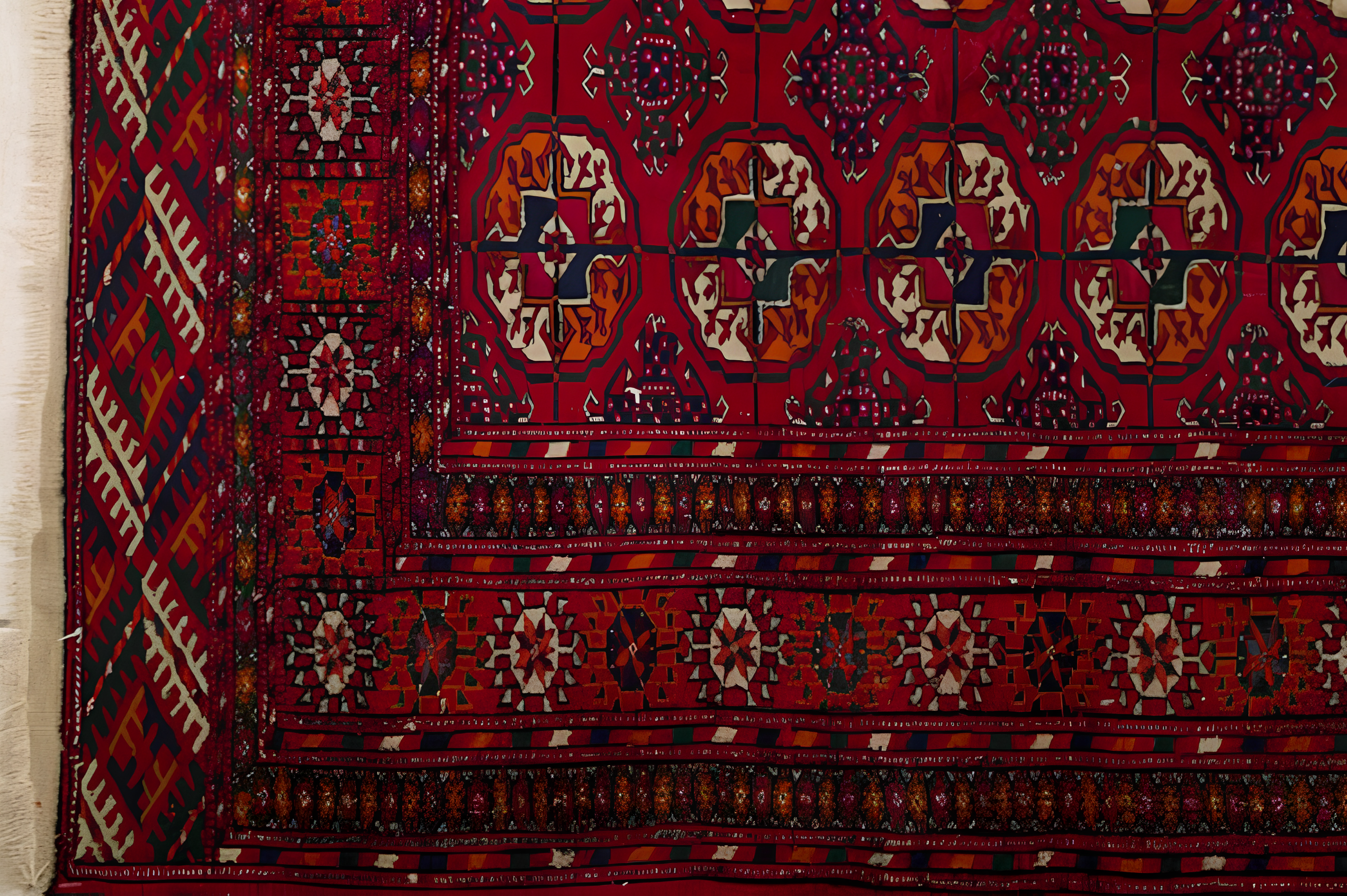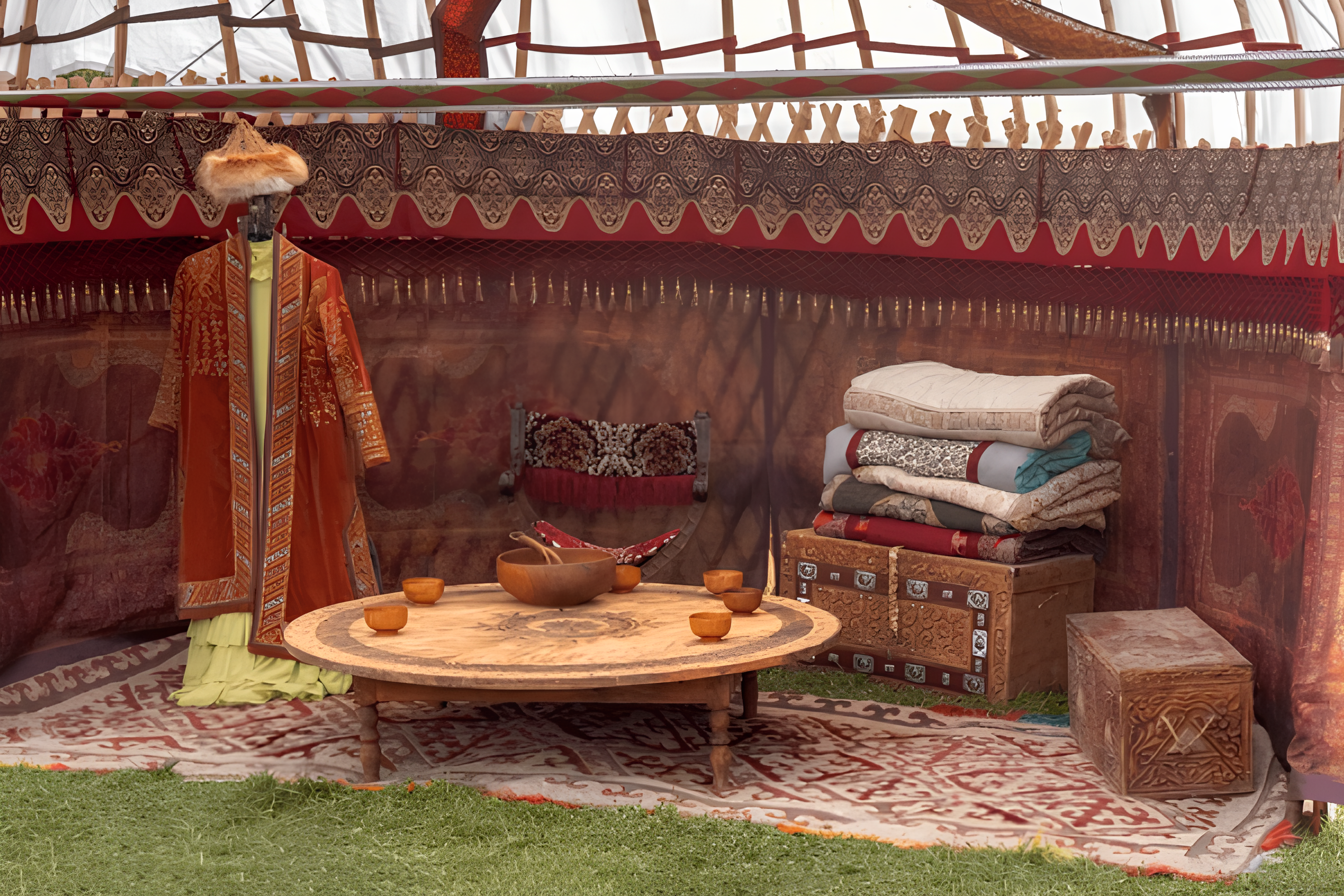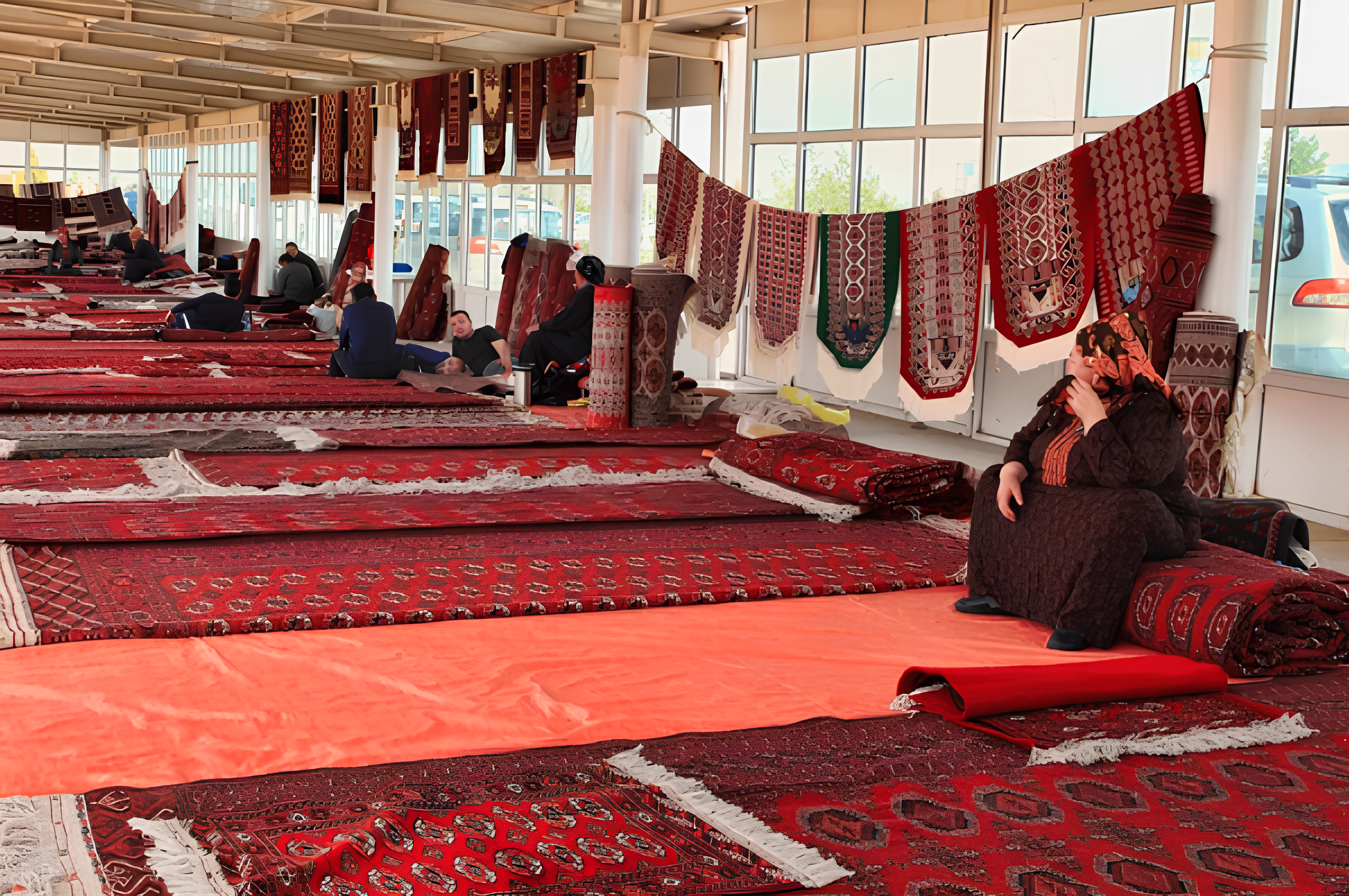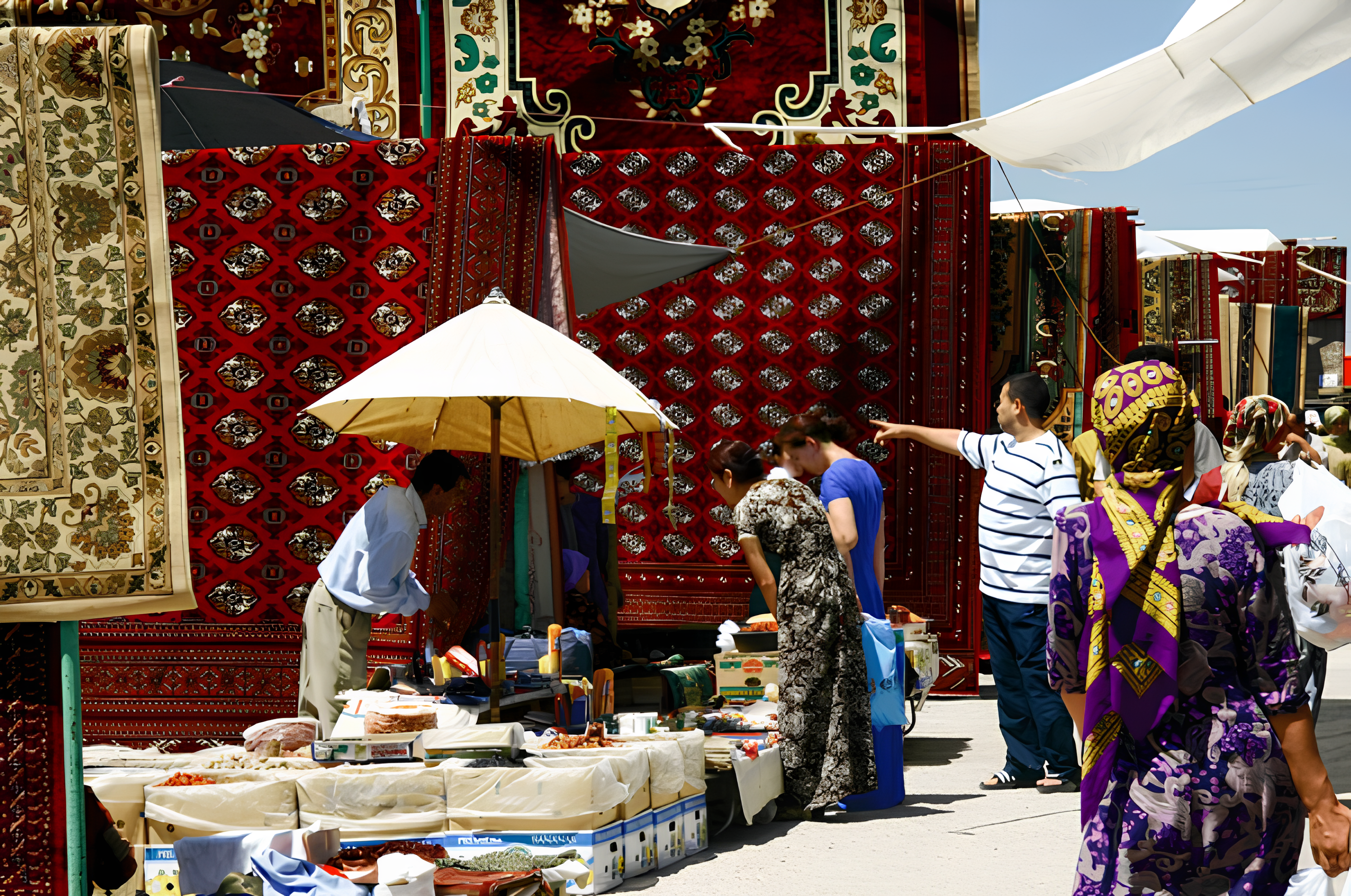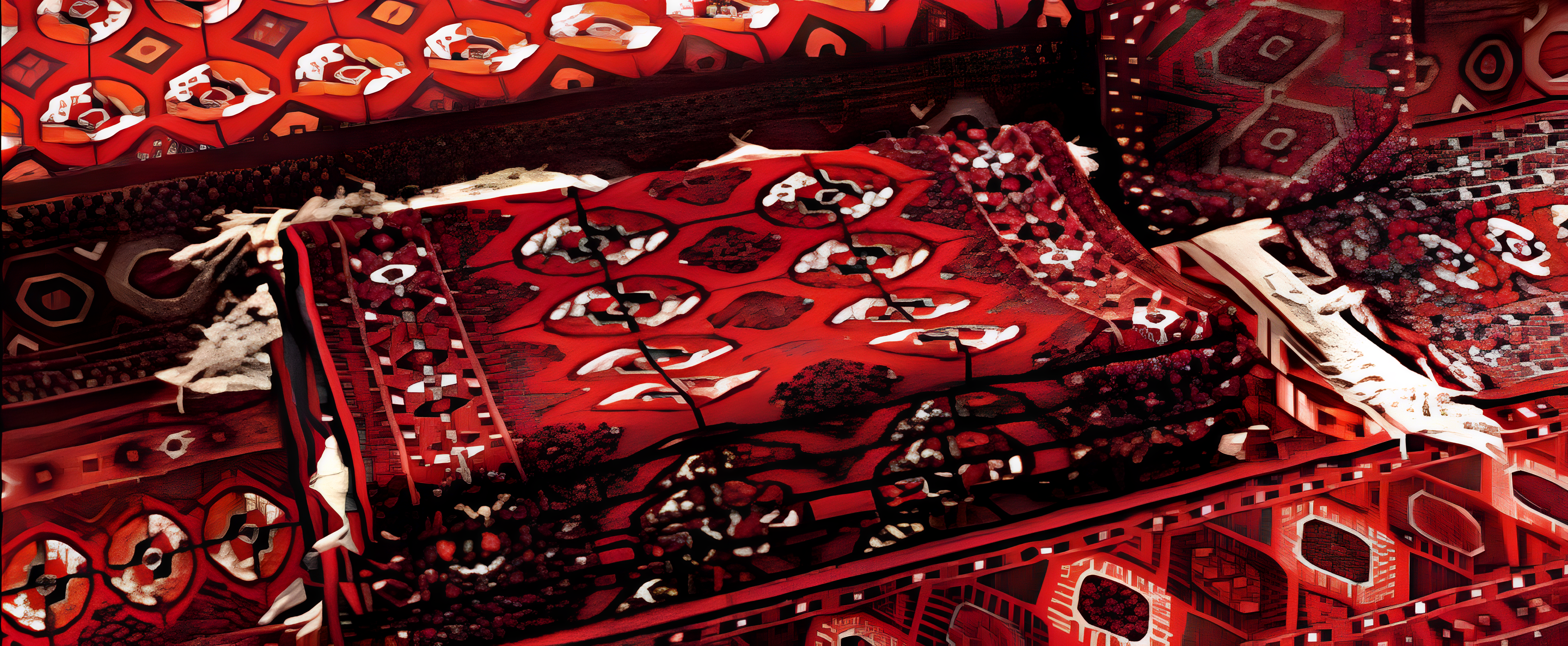

Turkmen rug is a kind of handmade floor-covering textile traditionally developing around Central Asia.
The authentic Turkmen rugs were made by the Turkmen tribes who are the main ethnic group
in Turkmenistan as well as also found in Afghanistan and Iran.
They are used for different purposes, such as tent rugs, door hangings, and bags of various sizes.
Turkmen carpets are known for their complex and quality of the wool used in their production.
The carpet weaving tradition in Turkmenistan dates back many centuries of the country's cultural heritage.
Turkmen carpets are highly valued by collectors and are often used as wall ha[unreadable] hes and public buildings.
The unique patterns and use of natural dyes make Turkmen carpets stand out,
and they are considered among the finest examples of traditional rug-making in the world.
Traditional Turkmen carpet-making craft has been inscribed on the list of the Intangible Cultural Heritage of Humanity of UNESCO in 2019.
Carpets, mostly in deep red color, and featuring a repeated motif known as a Gul means the flower,
are a great source of pride to the Turkmen.
They were among the most precious possessions of Turkmen nomads, the walls and floors of whose yurts were decorated with carpets.
Turkmenistan celebrates an annual Carpet Day,
and the national flag incorporates the flower typical of carpets from each of the country's five regions.
The flower is, in effect, an emblem of the tribe.
There is much debate as to the meaning of each of the patterns.
If you visit Ashgabat Carpet muses, the guides will explain to you the very everything about Turkmen carpets.
For instance, the flower characteristics of the Tekke tribe are divided into four parts to represent the seasons,
its alternating white and dark colors symbolizing day and night.
Within each of the four parts, the three designs resembling a flower.
The four colors used in the making of the carpet month, which makes the whole design a kind of calendar are said to represent the elements,
respectively, of earth, air, fire, and water.
The guides identify in the flower of the Yomud tribe, which occupies the Caspian shores of western Turkmenistan, many marine-related items.
Thus the elongated shape of the flower is said to represent a boat, or possibly a fish, and the design features repeated anchor shapes.
Around the edges of Yomud carpets may be identified a pattern resembling seashells intertwined with seaweed.
The Turkmen weavers are known for their exceptional skill and patience.
They are the main ethnic group in Turkmenistan, and their traditional carpet-weaving craft has
been passed down through generations.
The weavers use natural dyes and traditional techniques to create intricate patterns and designs.
The weavers are highly respected in Turkmen society, and their work is considered a valuable part
The Turkmen Carpet Museum or the National Carpet Museum is a national museum, situated on 5 Gorogly Street in Ashgabat, Turkmenistan.
The museum opened on 24 October 1994. It has the largest collection of Turkmen carpets of any museum.
It has a rich collection of Turkmen carpets from the medieval through to the 20th century, including over 1000 carpets from the 18th and 19th centuries.
Aside from its extensive collection of antique carpets, it has many carpet articles, chuvals, khurjuns, torba etc.
On the first floor of the museum are Tekke and Sarik carpets. The museum is noted for its huge Tekke carpets.
One Tekke carpet measures 193m² and weighs a tonne and was made by some 40 people in 1941 to make a curtain for the Bolshoi Theatre in Moscow.
Another, made in 2001, is even larger, measuring 301m² and 14 by 21.2 metres and was made to commemorate 10 years of Turkmen independence from the Soviet Union.
It is recognised by the Guinness World Records as the largest hand-woven carpet in the world.
One carpet, made in 1968, is representative of all the tribes in Turkmenistan, fusing together the different styles to display unity.
The museum also has carpets dedicated to President Niyazov. Some of the carpets on display are two-sided, often featuring different design on each side.
Here is the largest hand woven carpet in the world:
